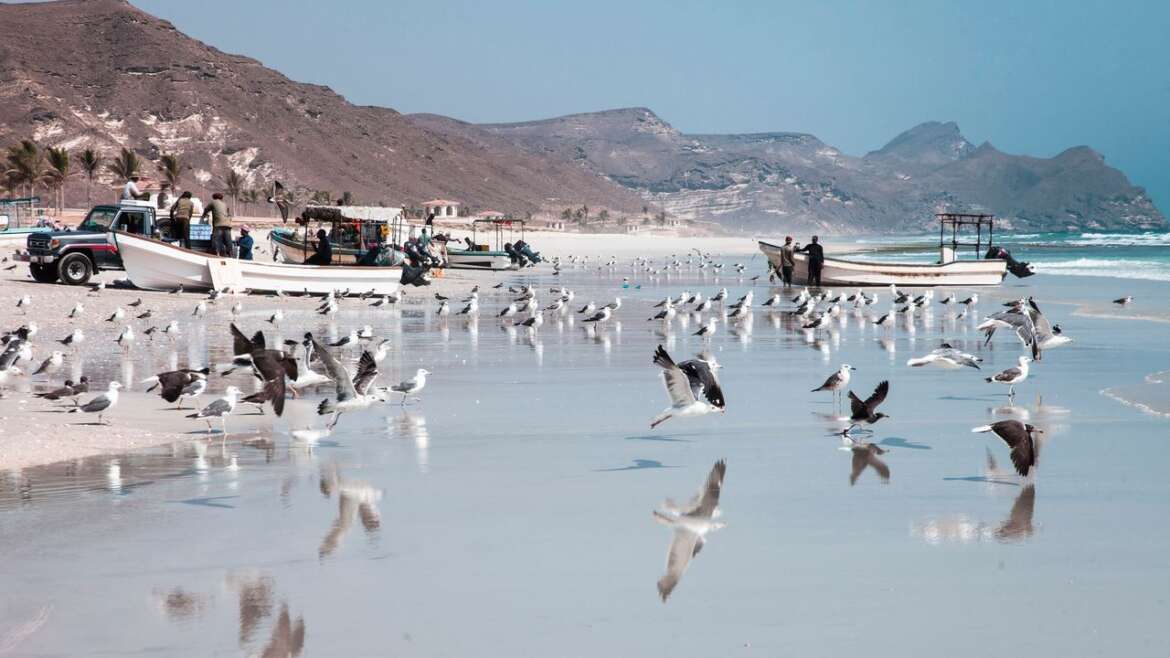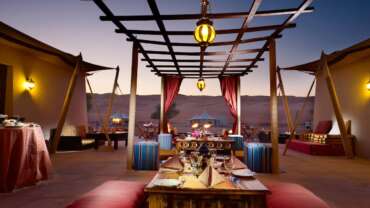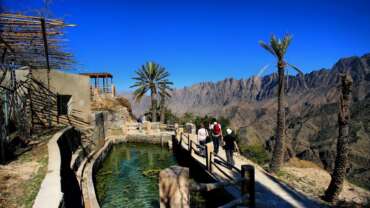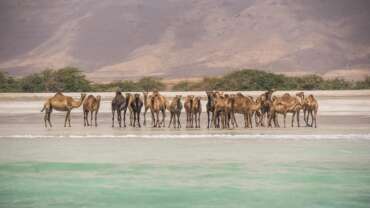Nature & Wildlife Tourism in Oman
A MAGNIFICENT ECOLOGY
Oman takes great pride in its magnificent ecology and diverse flora and fauna, actively protecting it through the establishment of nature reserves such as the Daymaniyat Islands near Muscat, the turtle reserve at Ras Al Jinz, the Land of Frankincense in Dhofar or the Arabian Oryx Sanctuary in Al Wusta.
Special attention is given to threatened or endangered species, as the oceans surrounding Oman are home to a range of fish species as well as dolphins and migrating whales; together with intricate corals and unique species of seaweeds that support the marine ecosystem.
Inland, protected areas cover vast areas serving as important breeding grounds for endangered species such as the Arabian Oryx, Nubian Ibex or rare Arabian Leopard. The Sultanate is also a bird watcher’s paradise, witnessing the migration of over 130 species of birds each year.
Nature reserves and habitats in the Sultanate cover an area of almost 30,000 square kilometers and also encompass reserves dedicated to plant life; the most famous being Oman’s frankincense trees.
MOUNTAINS
Mountains take up a large part of Oman’s landscape, varying greatly in appearance vegetation. Often times they feature stunning wadis, cut into the mountains through time and crossable only by 4×4.
WILDLIFE WATCHING
If you have ever witnessed endangered Green Turtle babies hatch and try to make their way to the water, you will know what a special experience it is. Oman remains dedicated to enabling these kind of wildlife encounters while protecting the animals.
GEOLOGY
Looking back on a geological history spanning across millions of years, Oman is one of the few places that carries its unique geological heritage on the open. Attractions such as Jebel Shams, or the Ophiolite rocks surrounding Muttrah Corniche, were once at the bottom of the ocean.
DESERTS
The interior of Oman is the gateway to one of the largest sand deserts in the world – the famous Empty Quarter or Rub Al Khali. Covering a large area of the Arabian Peninsula, this unique ecosystem is covered by sand dunes up to 250 metres in heights in certain areas, and salty planes in others.
BEACHES
With over 3,000 km of pristine coastline, Oman has some seriously beautiful beaches to call its own. Whether it is the rugged coastline of Ras Al Madrakah, the white sands of Fins Beach or the endless expanse of Masirah Island beaches, visitors are welcome to enjoy beach walks, picnics and wild camping.
WADIS
Wadis are dry riverbeds or small valleys. Some have stunning water pools, fed by natural springs, and a backdrop of rugged mountains. Others are framed by date and fruit plantations that to this day are tended by locals using traditional falaj or waterways.
CAVES
Oman has a large number of natural caves, varying in size and accessibility. Nevertheless, they are popular tourist destinations, sporting impressive formations such stalactites and stalagmites.
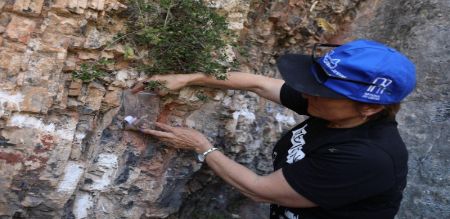
Kitab State Geological Reserve
Kitab Nature Reserve is located in Kitab region on the spurs of the Zarafshan range. This is one of the most unique natural monuments. Here, you can touch the history of the ancient world, track the stages of life formation on our planet. The remains of ancient life forms can be seen in the cuts of the local rocks.
Trails and viewing platforms are equipped here for the tourists. In the rocks you can find the oldest corals and other marine remains formed about 470 million years ago. It is amazing that about 140 million years ago a warm sea basin was located here.
The main attraction of the reserve is the opportunity to look closely at the history of the formation of mountains and the preserved ancient life forms in them. The paleontological and the biological museums, the hotel, the hostel and cottages are located here.
Unimaginable beauty of the Urgut district
Look what the spring has bloomed in Urgut, in the unique area of the Samarkand region! The birds are chirping everywhere, and the air is filled with the freshness and fragrance of spring flowers. April painted the local nature in bright and juicy colors. The majestic mountains of Zarafshan seem to stand guard over this beautiful landscape.
One of the main attractions of this area is the ancient Chor-minor garden. On the territory of the garden about fifty thousand-year-old plane trees grow. Many of them reach 16 meters in diameter. Each tree is like a messenger from the past. Their wonderful trunks and curved rhizomes create a unique appearance of the garden.
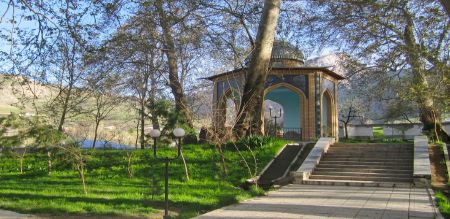
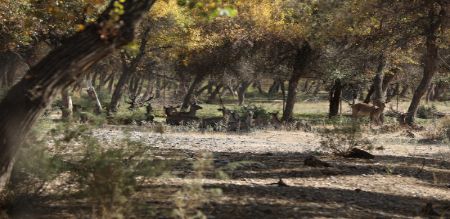
Zarafshan reserve
Located along the right bank of the Zarafshan River, in the southeast of the Samarkand region, the Zarafshan Reserve has a large territory – more than 2 thousand hectares of land. The tugai forests and the rare Zarafshan pheasant on its territory are strictly protected by the government of the country.
Although the entire area of the reserve is tugai forests, in addition to tugai, fruit trees, willow, poplar, comb, sea buckthorn, reed, licorice, broom, goof and much more can be found here.More than 24 species of mammals make up the local fauna, including fox, badger, jackal, toll hare, porcupine and various rodents.



